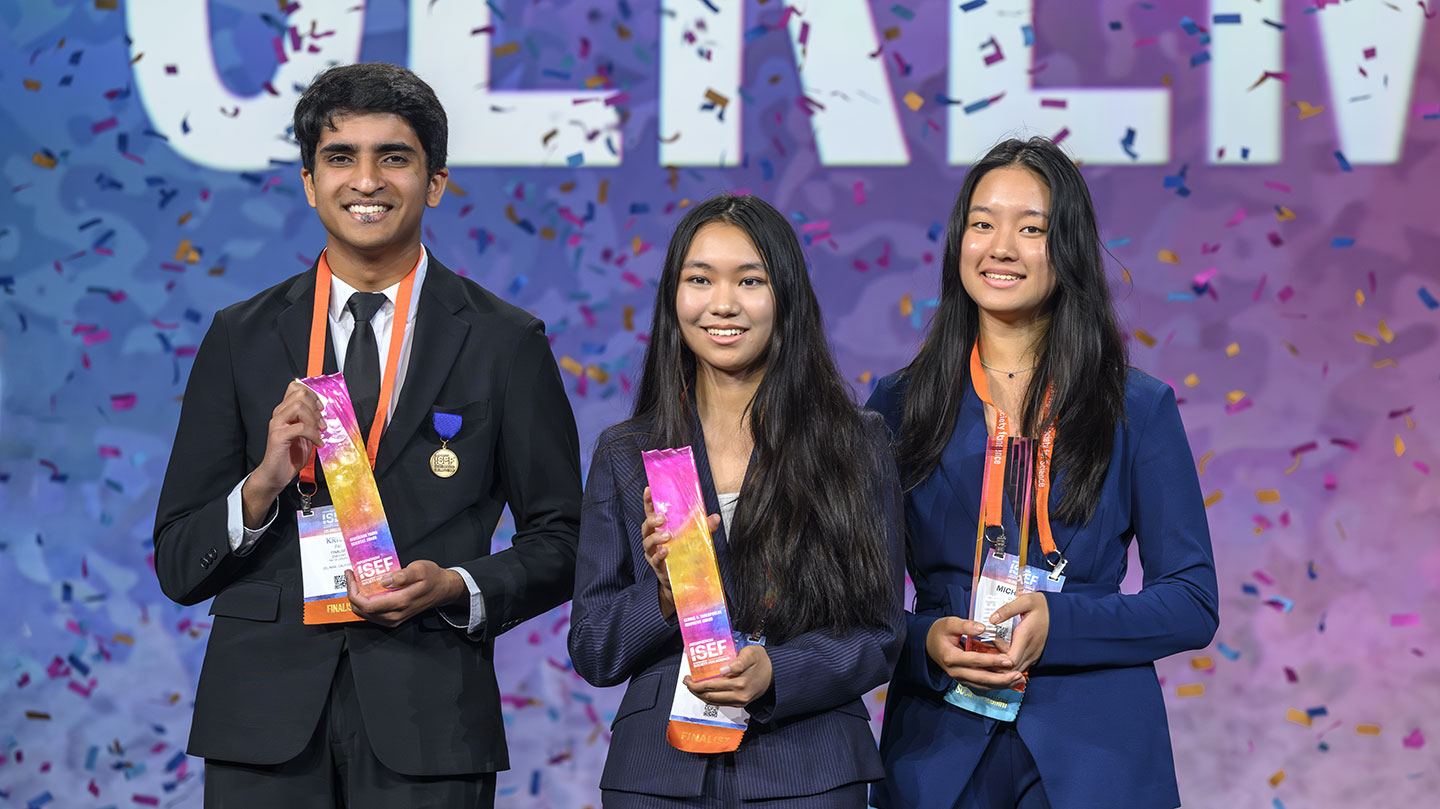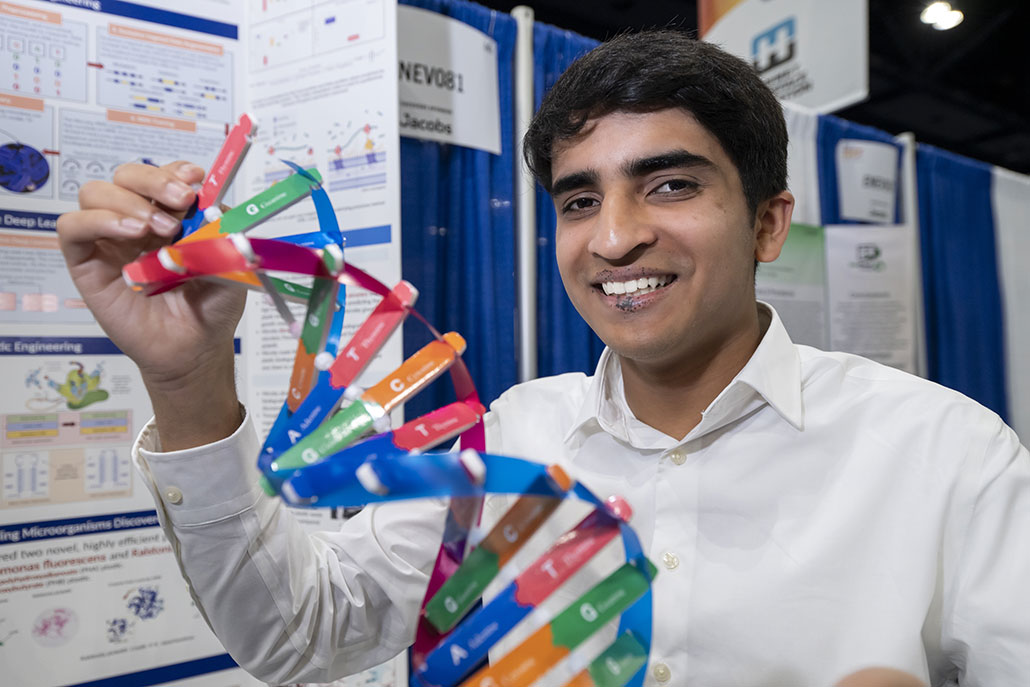During this summer, a team of students from MIT embarked on a journey to the sou …
Bioelectronics research takes top prize at 2024 Regeneron ISEF
Jennifer Livingstone

LOS ANGELES, Calif. — A trio of teenagers were awarded top honors and significant prize money today at the 2024 Regeneron International Science and Engineering Fair (ISEF) for their research in bioelectronics, microbe genetics, and mathematics. Each of these young researchers received a minimum of $50,000.
Over 1,900 high school finalists from across the globe gathered in Los Angeles this week to vie for top honors. The event awarded over $9 million in total prizes to hundreds of participating teens.
Addressing the attendees at the grand awards ceremony, Maya Ajmera, the president of the Society for Science, lauded the young researchers, calling them future innovators, leaders, and trailblazers. She emphasized the importance of their contributions in tackling global challenges.
The Society has overseen ISEF since its inception in 1950.
The recipient of this year’s top award was 16-year-old Grace Sun, a junior at Paul Laurence Dunbar High School in Lexington, KY. She enhanced an electronic device aimed at internal diagnostic and therapeutic applications within the body. Grace’s innovation focused on improving the performance of a specific type of transistor designed to amplify electrical signals.
Grace’s device can detect and amplify natural electrical signals in the body, potentially assisting in monitoring vital functions like heart rate or glucose levels.
While bioelectronic devices have been in development for some time, they have faced challenges regarding stability within the body and the speed of electrical signal transmission. Grace’s breakthrough involved adding a salt to the device’s polymer composition, significantly enhancing its performance.
Scientists Say: Salt
Grace’s experimentation with different salts revealed that TBACl, short for tetrabutylammonium chloride, produced the most favorable results when incorporated into the polymer. The optimal ratio was found to be one part of the salt to every five moles of material in the recipe.
This modification drastically improved the device’s signal amplification capacity and stability inside the body. The addition of the salt boosted signal amplification by 97%, charge storage by 107%, and signal mobility by 77% compared to the untreated device.
Scientists Say: Polymer
Further enhancing the process by blending the salt in a specific liquid before combining it with the polymer led to even greater improvements in signal amplification and mobility, surpassing conventional methods.
Grace envisions her innovation offering cost-effective and versatile solutions for more accurate and affordable medical diagnostics and treatments.
Grace was awarded the George D. Yancopoulos Innovator Award and $75,000 for her research, in addition to winning the materials science division and securing an extra $5,000 in prize money.

Microplastic-Degrading Microbes Discovery
Addressing the prevalent issue of microplastic pollution, 17-year-old Krish Pai devised a tool utilizing microbial DNA data to predict which microbes possess the ability to biodegrade plastics effectively.
Concerned about the escalating plastic pollution, Krish leveraged his expertise in computational biology and artificial intelligence to develop a practical solution.
Let’s learn about microplastics
While some plastic-degrading microbes have been discovered previously, Krish’s innovative approach involved mining microbial DNA databases to compile a vast genetic dataset encompassing numerous species capable of breaking down plastics.
Scientists Say: Data
Training a computer model, dubbed Microby, on this extensive dataset enabled Krish to predict a microbe’s plastic-degrading capabilities with 92% accuracy. Through this process, he identified two novel plastic-consuming bacteria and confirmed their efficacy in degrading plastics.
Explainer: What is a computer model?
Microby also offers predictions for enhancing other microbes to enable plastic degradation, setting the stage for Krish’s future experiments involving the CRISPR gene-editing tool.
For his groundbreaking research, Krish received a Regeneron Young Scientist Award and $50,000, claiming the top spot in the environmental engineering division and securing an additional $5,000 in prize money.
Mathematical Problem-Solving Innovation
Michelle Wei, a 17-year-old student at the Harker School in San José, Calif., developed a novel technique to expedite mathematical analyses using advanced computing procedures.
Explainer: What is an algorithm?
Michelle’s algorithm-based approach streamlines the computation, breaking down complex constraints into manageable components, significantly accelerating solving times for mathematical problems.
With a vision to make her algorithm universally accessible across different research domains, Michelle aims to revolutionize mathematical modeling practices.
.
Do you have a science question? We can help!
Submit your question here, and we might answer it an upcoming issue of Science News Explores
Michelle was recognized with a Regeneron Young Scientist Award and $50,000 for her research. She excelled in ISEF’s systems software division, earning an extra $5,000 in prize money. Michelle also garnered several special awards, showcasing the broad impact of her work.
Kate Choi, a 17-year-old student from the Potomac School in McLean, Va., expressed her admiration for the global scientific camaraderie at ISEF, underscoring the significance of passion for research among participants.
Although not all students secured top accolades, many cherished the collaborative and inspiring environment of the Regeneron ISEF, fostering a sense of shared dedication and discovery.
The diverse pool of finalists at this year’s ISEF represented nearly 70 countries, regions, and territories.

